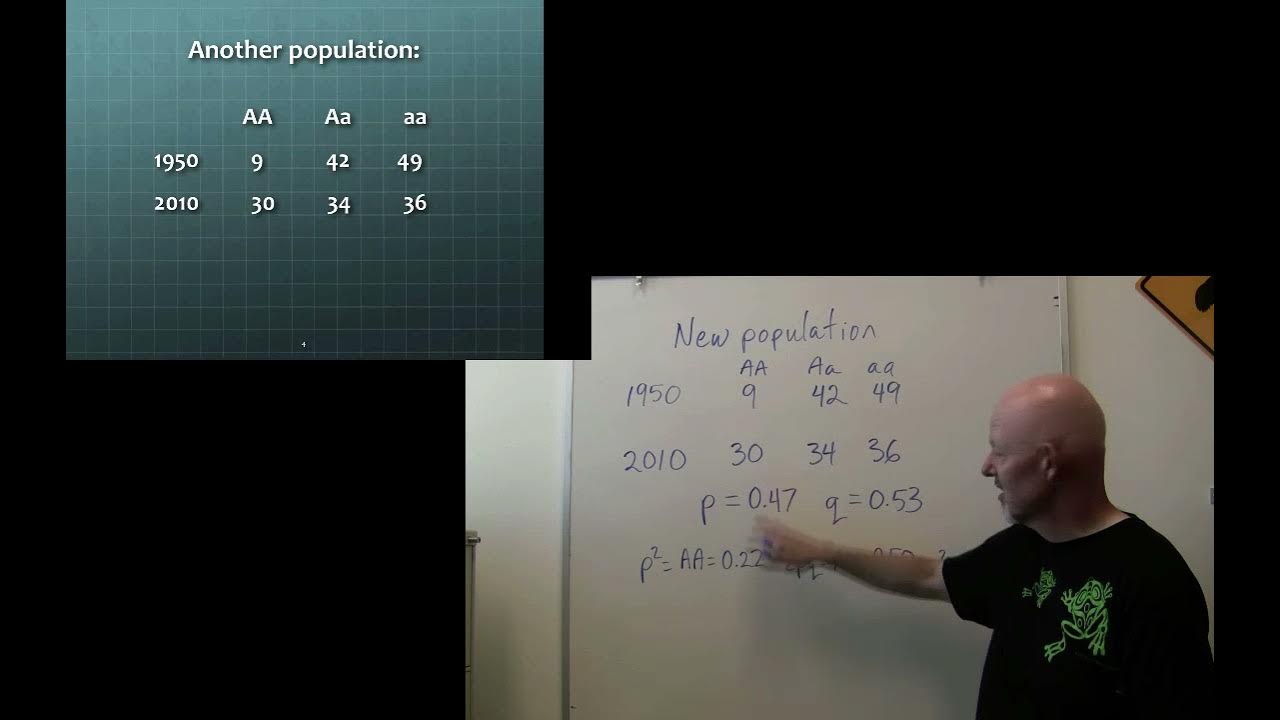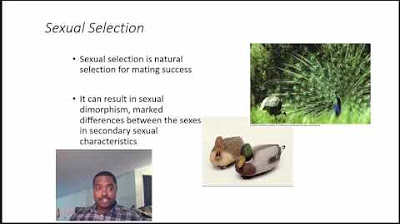Motivation for studying LD
Summary
TLDRThe video discusses the Hardy-Weinberg equilibrium and its implications for genetic diversity. It explains how allele frequencies in gametes lead to expected genotype proportions in one generation if assumptions hold. The speaker introduces principal component analysis to visualize genetic variation across populations, highlighting differences in ancestry and genetic susceptibility to diseases like COVID-19. The video contrasts linked and unlinked genetic data, emphasizing how mitochondrial DNA offers insights into ancestry and relationships. Overall, it underscores the complexity of genetic data interpretation, blending statistical analysis with biological insights.
Takeaways
- 😀 The Hardy-Weinberg principle allows prediction of allele and genotype frequencies in a population under specific conditions.
- 😀 Equilibrium is reached instantaneously if gametes fuse randomly and the Hardy-Weinberg assumptions are met.
- 😀 Genetic diversity can be visualized using principal component analysis (PCA), which simplifies complex genetic data into two dimensions.
- 😀 The frequency of zygotes can be calculated from differing allele frequencies in male and female gametes.
- 😀 Mitochondrial DNA is a non-recombining sequence that provides insights into maternal lineage and ancestral relationships.
- 😀 PCA can help identify genetic patterns, such as ancestry and disease responses among populations.
- 😀 The complexity of genetic data can involve millions of differences among individuals in a population.
- 😀 Genetic data analysis can distinguish between linked sequences (like mitochondrial DNA) and genome-wide SNPs.
- 😀 The branching pattern of gene genealogy from mitochondrial DNA helps reconstruct evolutionary relationships.
- 😀 Understanding both linked and unlinked genetic data is essential for comprehensively interpreting human genetic diversity.
Q & A
What is the Hardy-Weinberg equilibrium?
-The Hardy-Weinberg equilibrium describes a genetic scenario in which allele and genotype frequencies remain constant from generation to generation in the absence of evolutionary influences.
How quickly does the Hardy-Weinberg equilibrium occur?
-If the Hardy-Weinberg assumptions hold true, equilibrium can be achieved in one generation, meaning the expected genotype proportions appear immediately if gametes fuse randomly.
What is the significance of using multiple loci in genetics?
-Using multiple loci complicates the application of the Hardy-Weinberg principle, as the expected genotype frequencies may not stabilize as quickly or predictably as with single loci.
What role does principal component analysis play in genetic data?
-Principal component analysis (PCA) is used to summarize complex genetic data into fewer dimensions, allowing researchers to visualize patterns of genetic diversity among individuals.
How can genetic diversity patterns be observed in humans?
-Patterns of genetic diversity among humans can be represented in PCA plots, which show how individuals cluster based on their genetic similarities and differences.
What are the implications of genetic differences in COVID-19 outcomes?
-Genetic differences may contribute to variations in COVID-19 outcomes, such as severe versus mild infections, but disentangling genetic influences from socioeconomic factors poses challenges.
What is the mitochondrial genome and its significance?
-The mitochondrial genome is a non-recombining genetic sequence passed down maternally, making it useful for studying lineage and evolutionary relationships without the complications of recombination.
How can we infer relationships from mitochondrial DNA sequences?
-By comparing mitochondrial DNA sequences, we can identify genetic differences, estimate the time to the most recent common ancestor, and infer the branching pattern of ancestry.
What is the relationship between linked and unlinked genetic sequences?
-Linked sequences, like mitochondrial DNA, provide tree-like genealogies, while unlinked sequences offer genome-wide data visualized through PCA plots, each providing complementary information.
What challenges arise when analyzing genetic data from multiple loci?
-The main challenge is that genetic data is often neither perfectly linked nor completely independent, making it difficult to predict associations and outcomes accurately.
Outlines

This section is available to paid users only. Please upgrade to access this part.
Upgrade NowMindmap

This section is available to paid users only. Please upgrade to access this part.
Upgrade NowKeywords

This section is available to paid users only. Please upgrade to access this part.
Upgrade NowHighlights

This section is available to paid users only. Please upgrade to access this part.
Upgrade NowTranscripts

This section is available to paid users only. Please upgrade to access this part.
Upgrade Now5.0 / 5 (0 votes)





